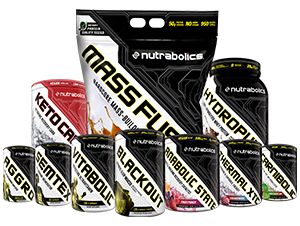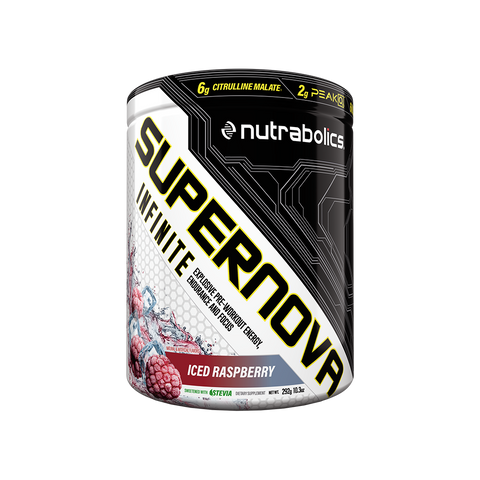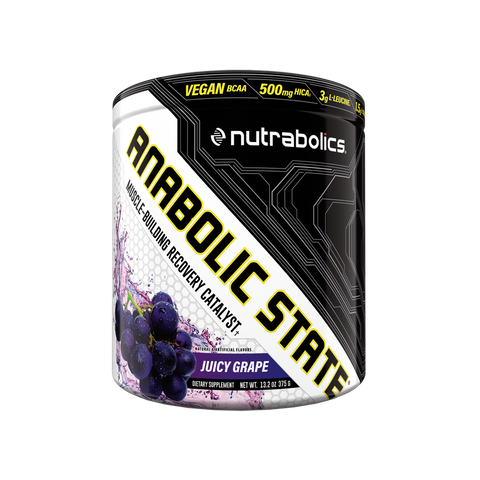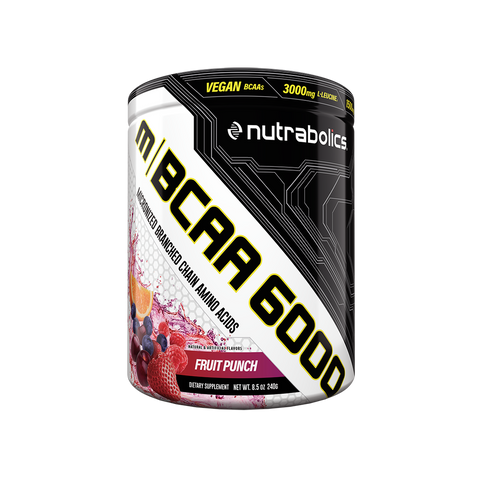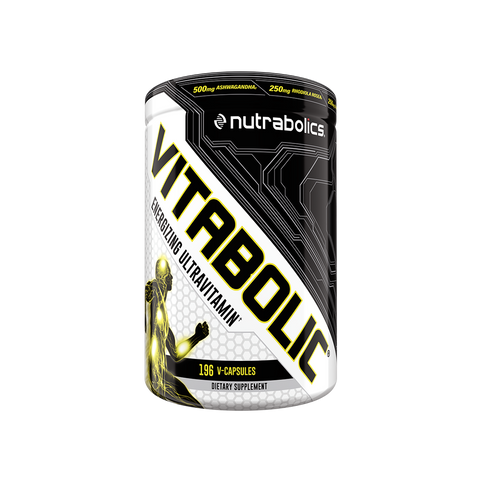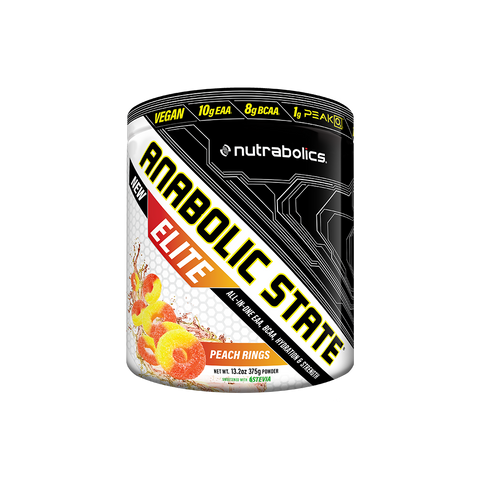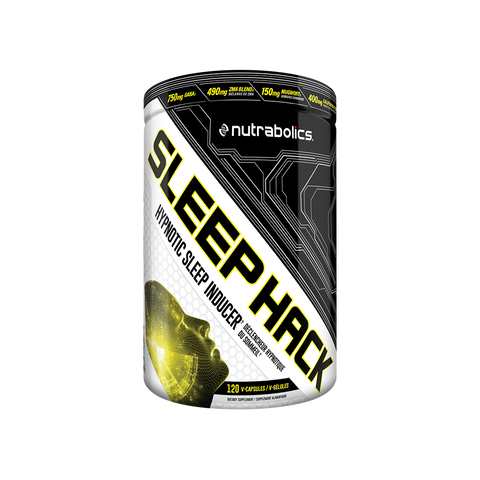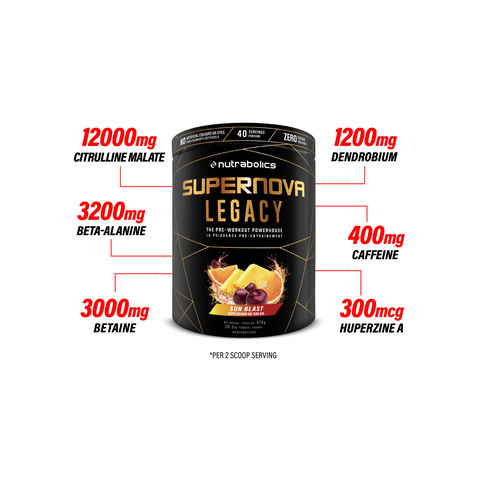By Hamish McIntosh
The science of nutraceuticals and supplementation is a continually evolving field. Scientists are always searching for a deeper understanding of how the body works, They then use that insight to help in the discovery and development of new substances that will spur athletes’ bodies to greater efficiencies and achievements. One such substance – one that is getting a lot of press and attention in supplementation industry – is referred to as HICA. While many questions remain to be answered about HICA, it seems to offer some exciting benefits for bodybuilders, and for this reason Nutrabolics has incorporated it as a key ingredient in Anabolic State.
What Is HICA?
HICA is an abbreviation for L-α-hydroxyisocaproic acid, also known as Leucic Acid. This is a product – or metabolite - of the better-known leucine, the branched chain amino acid (BCAA) used by the body in the synthesis of skeletal muscle protein. Leucine is an important amino acid for athletes, because it breaks down faster than other amino acids. This means it is highly effective – some say critical - in helping to stimulate the production of other protein and energy molecules in the human body. Leucine not only offers important capacities in aiding muscle development, but also in slowing muscle tissue degradation. As an essential amino acid, our bodies do not produce Leucine naturally. We ingest it in our diet in meat and fish, and it has become a popular supplement for athletes. Recent research has indicated that HICA – as a metabolite of Leucine – may either offer the same or more advanced muscle-building and lean-mass creation properties as its progenitor. There is also evidence that it actually works to compliment and enhance Leucine’s effect on muscle protein synthesis. The research suggests that HICA may work in the body in ways that ensure the fundamental muscle-building work of Leucine is maximized. Although HICA is a conversion product of Leucine, its’ conversion rate is very small, so supplementing with Leucine will not provide elevated levels of HICA in the body. HICA can be found naturally in foods such wine, cheese and sake; mostly as a result of the fermentation process acting in these foods. But athletes who want its benefits for their training regimen should supplement with it. To support this need, Nutrabolics’ Anabolic State recovery formulation contains 3,000 milligrams of Leucine. Scientists at Nutrabolics realized that with its ability to stimulate Leucine’s protein production, HICA is potentially the perfect ingredient to add to their Anabolic State formulation. This powerful recovery supplement is even more effective with this ingredient in it by leveraging HICA’s demonstrated effects.

Building A Lean Machine
 The spotlight was turned onto HICA after several pilot studies were completed in Finland. In the first (and unpublished) study, the researchers had wrestlers supplement with 500mg of HICA three times a day during a 6-week intensive training program. The training program was one that would normally result in muscle and weight loss. At the end of this time period the wrestlers had added about 2 pounds of lean muscle to their frames. They also reported a reduction in the delayed onset of muscle soreness (DOMS). This is the muscular discomfort that occurs after strenuous exercise.
The spotlight was turned onto HICA after several pilot studies were completed in Finland. In the first (and unpublished) study, the researchers had wrestlers supplement with 500mg of HICA three times a day during a 6-week intensive training program. The training program was one that would normally result in muscle and weight loss. At the end of this time period the wrestlers had added about 2 pounds of lean muscle to their frames. They also reported a reduction in the delayed onset of muscle soreness (DOMS). This is the muscular discomfort that occurs after strenuous exercise.
Because of these results, the researchers decided to do a second study, this time with soccer players in a double-blind experiment. Half the group was given a placebo, while the other half supplemented with the same 500mg of HICA three times a day. Both groups then participated in the same intense training and game-playing regimen, consisting of 4 practices, 2 weight-training workouts, and a game each week. At the end of a four-week period, the athletes who had been supplementing with HICA showed an average gain of about 1 pound of muscle to their legs, while their fat mass remained constant. The placebo group lost muscle, as would be expected from such an intense training program.
These two interlocking studies have showed incredibly promising results. Scientists and nutritionists across the supplementation industry started looking closely at HICA. A pound of muscle gain over 4 weeks extremely intense workout program is impressive. There isn’t evidence yet that HICA will produce the same results for athletes who are training on a lighter, less intense schedule. While more research is needed, scienttists at Nutrabolics believe that the indications are clear about HICA: it’s potential for muscle building makes it worthy of incorporating into their advanced formulations.
A Muscle-Building Weapon
So how does HICA work? The fact is that no one is completely sure yet. The evidence so far suggests a complicated process. As we know, intense exercise produces waste products in the bloodstream like lactate and ammonia. As these waste products circulate through the bloodstream they help to create that familiar sense of fatigue. When HICA is in the muscle cells it seems to bind acid and so reduce acid buildup, allowing athletes to exercise harder, and not wear down as quickly. In the bloodstream, it apparently functions like BCAAs to help boost the clearing process of these waste products. This, in turn, keeps fatigue from developing at its traditional pace.
More effective ways of increasing the production of lean muscle mass and reducing fatigue will always be welcomed by any serious athlete. Contributing to this potential HICA offers the possibility of making the proven supplement Leucine function at an even higher level. Athletes who are following the cutting edge of supplementation are excited at it’s possibilities. Nutrabolics is, as always, following the research carefully. Any improved understanding regarding the power and effectiveness of HICA will quickly be further integrated into their products.
REFERENCES
Effects of alfa-hydroxy-isocaproic acid on body composition, DOMS and performance in athletes. Mero et al. Journal of International Soccer Sports Nutrition.
